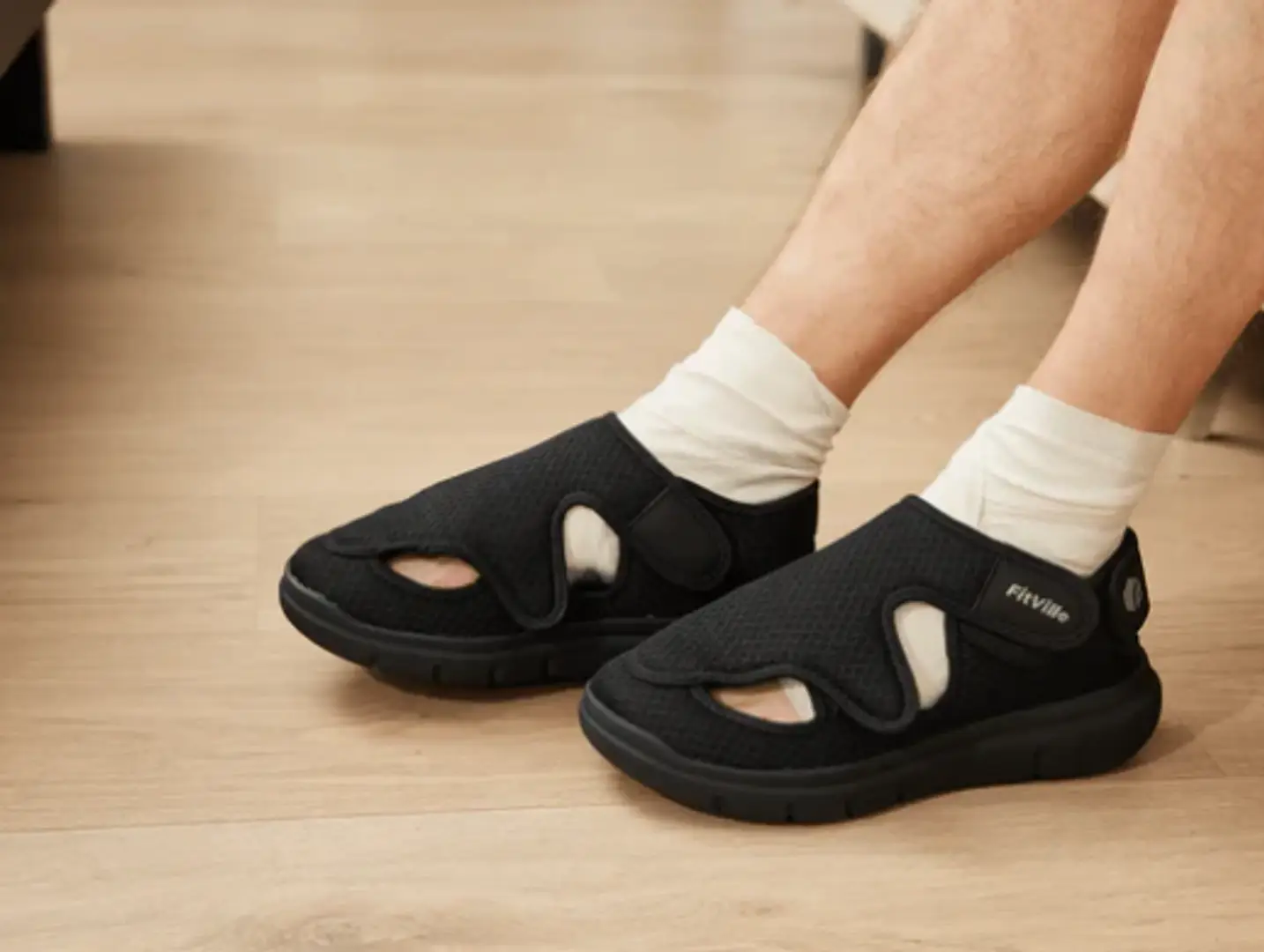

Diabetic Trainers: Support, Comfort, and Protection for Active Lifestyles
Living with diabetes doesn’t mean giving up on an active lifestyle. In fact, regular walking and light exercise can help maintain healthy blood sugar levels and improve overall well-being. But for those with diabetes, foot health is a top priority—and that’s where diabetic trainers come in.
Diabetic trainers are specially designed athletic-style shoes that offer extra cushioning, protective features, and roomy fits to prevent foot injuries. They allow you to move comfortably and safely, whether you’re heading out for a daily walk, running errands, or enjoying light workouts.
Why Diabetic Trainers Matter
Diabetes can cause two major foot-related issues:
Peripheral Neuropathy – Nerve damage that reduces sensation in the feet, making it harder to notice injuries.
Poor Circulation – Slows down healing, increasing the risk of infection.
Wearing ill-fitting or unsupportive shoes can lead to blisters, sores, and pressure points that may go unnoticed but quickly become serious. Diabetic trainers help by providing:
Extra cushioning to absorb shock and reduce pressure
Wide, deep toe boxes to prevent rubbing and cramping
Seamless interiors to avoid skin irritation
Supportive soles to improve balance and stability
Benefits of Diabetic Trainers
All-Day Comfort – Trainers are lightweight, breathable, and designed to reduce fatigue, making them ideal for long walks or errands.
Injury Prevention – Soft interiors and protective padding reduce the chance of cuts or blisters.
Support for Foot Conditions – Helpful for bunions, hammertoes, arthritis, and swelling.
Encouragement to Stay Active – Comfortable shoes make it easier to keep up with healthy movement routines.
Key Features to Look for in Diabetic Trainers
When shopping for diabetic-friendly trainers, pay attention to:
- Wide and Deep Fit
- Look for Wide (2E), Extra Wide (4E), or even XX-Wide (6E) options to allow your feet to sit naturally without restriction.
- Seamless, Padded Interior
- Even a small seam can cause irritation for sensitive feet. A smooth, padded lining is a must.
- Shock-Absorbing Cushioning
- EVA midsoles, memory foam insoles, or air-cushioned heels help reduce joint strain and protect sensitive soles.
- Breathable Upper Materials
- Mesh or lightweight knit fabrics help keep feet cool and dry, reducing the risk of fungal infections.
- Slip-Resistant Outsoles
- Good grip is essential for preventing falls, especially if you have balance issues.
- Removable Insoles
- This allows you to insert custom orthotics or diabetic insoles for extra support.
Popular Styles of Diabetic Trainers
Diabetic trainers aren’t all the same—different designs suit different lifestyles:
Walking Trainers – Cushioned, flexible, and breathable for daily walks or light exercise.
Casual Trainers – Stylish enough for everyday wear while still offering diabetic protection.
Lightweight Running Trainers – Designed for those who enjoy a bit more speed in their workouts but still need foot protection.
Slip-On Trainers – Easy to get on and off, especially helpful if you have mobility challenges or swelling.
Care Tips for Diabetic Trainers
Proper maintenance keeps your trainers in top condition and your feet safe:
Check the inside daily for stones, dirt, or worn areas that could cause irritation.
Rotate pairs to extend shoe life and allow them to air out.
Replace insoles regularly if they lose cushioning or support.
Clean often according to the manufacturer’s instructions—especially important for mesh materials.
Avoid barefoot walking inside trainers to reduce bacteria build-up.
Recommended Brands for Diabetic Trainers
Some brands stand out for their combination of athletic design and diabetic-friendly features:
FitVille – Offers wide and extra-wide trainers with orthopedic cushioning, slip-resistant soles, and breathable uppers.
Orthofeet – Known for orthopedic sports shoes with customizable insoles.
Propet – Affordable trainers available in multiple widths and supportive designs.
New Balance – Athletic-style trainers with wide-fit options and good arch support.
How to Ensure the Right Fit
Even the best diabetic trainers won’t work if they don’t fit properly:
Measure your feet in the afternoon when they’re at their largest.
Fit for the larger foot if there’s a difference.
Try trainers with the socks you’ll wear during activity.
Make sure there’s about a thumb’s width between your longest toe and the shoe’s front.
Staying Active with Confidence
Wearing diabetic trainers makes it easier to stay active without fear of foot injuries. Whether you enjoy walking in the park, exploring a new city, or attending fitness classes, the right trainers will keep you supported and comfortable.
Remember, keeping your feet healthy is an essential part of managing diabetes. The more comfortable your shoes, the more likely you are to keep moving—and that’s one of the best things you can do for your overall health.
Final Thoughts
Diabetic trainers are more than just athletic shoes—they’re a protective tool for your health. With features like wide fits, seamless interiors, extra cushioning, and slip-resistant soles, they help reduce the risk of foot injuries while keeping you active.
Investing in the right pair means you can walk, exercise, and go about your day with comfort, confidence, and peace of mind. Your feet deserve it.
Related Posts
© 2025 Invastor. All Rights Reserved

User Comments